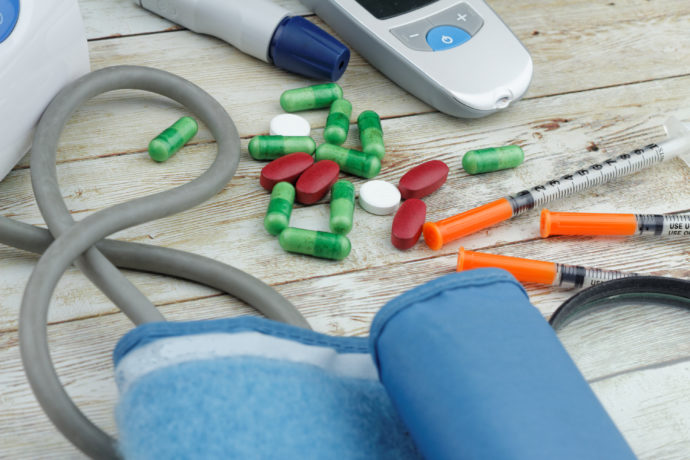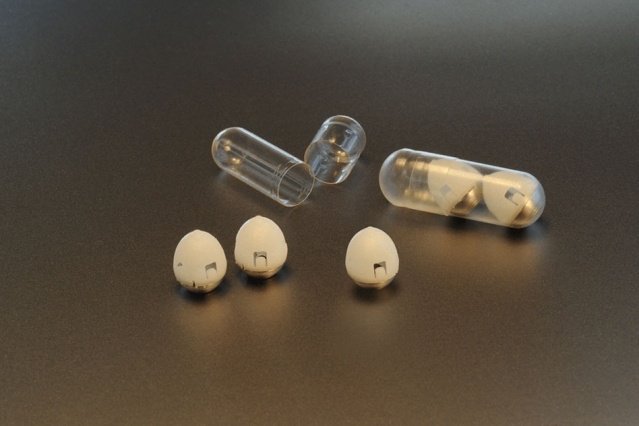
Researchers have long been attempting to create an oral insulin pill to replace injections for diabetics, and an elite research team has recently made a huge advancement in this effort. Being that insulin is a protein, the human digestive system typically degrades it as it does any other protein before it can enter the bloodstream to take effect. By creating a pill that adheres to the wall of the stomach and injects itself into the bloodstream, however, these scientists have found a potential way to overcome this barrier.
Published in Science these findings come from an MIT-led team assisted by researchers from Harvard University and Novo Nordisk, a leading insulin producer. The small pill is roughly the size of a blueberry and contains a small needle with compressed insulin that self-injects upon reaching the stomach. In an animal study, the researchers found that the pill was capable of delivering insulin to lower blood sugar in a manner comparable to those yielded by skin injections. The team notes that this innovative injecting-pill model can be applied to protein drugs other than insulin.
“We are really hopeful that this new type of capsule could someday help diabetic patients and perhaps anyone who requires therapies that can now only be given by injection or infusion,” claimed study author Robert Langer, MIT professor and member of MIT’s Koch Institute for Integrative Cancer Research.
READ MORE: IQcast Helps Diabetics Predict Blood Sugar Drops 4 Hours in Advance
The senior author of this study was Giovanni Traverso, an assistant professor at Brigham and Women’s Hospital, Harvard Medical School, and a visiting scientist in MIT’s Department of Mechanical Engineering. The study’s first author is Alex Abramson, an MIT graduate student, and several pharmaceutical scientists at Novo Nordisk comprised the team as well.
This is not the first time that researchers involved in the study have experimented with pills that administer injections. Years ago, Langer, Traverso and colleagues created a pill that was coated with many tiny needles to inject drugs into the gastrointestinal lining. The difference with their new model is that it only contains one needle, which avoids injecting drugs to the interior stomach lining where they could be broken down.
The needle’s tip contains compressed, freeze-dried insulin formed by processes similar to those used to create drug tablets. The needle’s shaft is comprised of a biodegradable material that does not enter the stomach’s wall. The way the pill delays injection until it enters the stomach is by use of a spring and a sugar disk. The spring is attached to this disk, which dissolves upon reaching the stomach and releases the spring. The needle is attached to this spring, therefore when it decompresses it injects the needle into the wall of the stomach.
Though an injection to the stomach sounds painful, the stomach does not contain pain receptors- therefore the researchers believe that the injection would not be felt by patients. In addition the pill self-orients in the stomach to ensure that the needle injects into the stomach wall regardless of how it lands in the organ. This aspect of the pill was inspired by the leopard tortoise, whose steep shell shape allows it roll back into position if it is on its back. The team used a computer model to design the pill shape to mimic this adaptation, allowing it to properly orient itself in the churning environment of the stomach.
What’s important is that we have the needle in contact with the tissue when it is injected,” stated Abramson. “Also, if a person were to move around or the stomach were to growl, the device would not move from its preferred orientation.”
The insulin in the tip of the needle dissolves at a rate controlled by the researchers via capsule preparation. The team found it took roughly one hour for the insulin to fully release into the bloodstream.

Using pigs as the model animal in the study, the researchers were able to successfully deliver up to 300 micrograms of insulin and have recently been able to increase the does to 5 milligrams. This higher dosage is comparable to the quantity needed via injection for a patient with type 1 diabetes. No adverse events were correlated to consumption and digestion of the pill.
Going forward, MIT is continuing to work with Novo Nordisk to optimize the technology and manufacturing process of the capsules. The team is confident that the system could not only administer insulin for diabetics, but immunosuppressants used to treat rheumatoid arthritis or inflammatory bowel disease as well.
MIT’s insulin pill could replace injections for people with type 2 diabetes https://t.co/jpAjE0X20F
— TechCrunch (@TechCrunch) February 8, 2019







 © 2025 Mashup Media, LLC, a Formedics Property. All Rights Reserved.
© 2025 Mashup Media, LLC, a Formedics Property. All Rights Reserved.